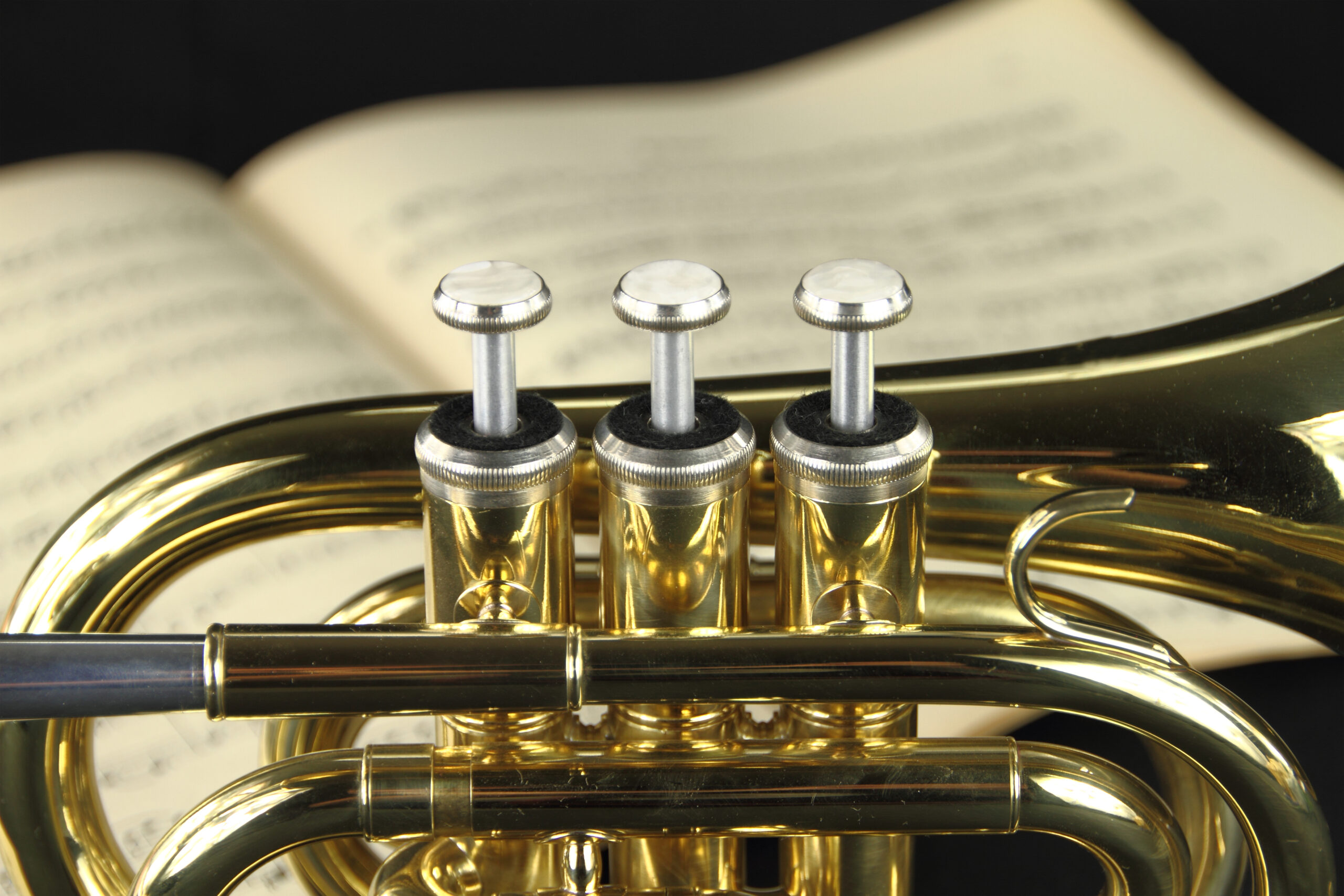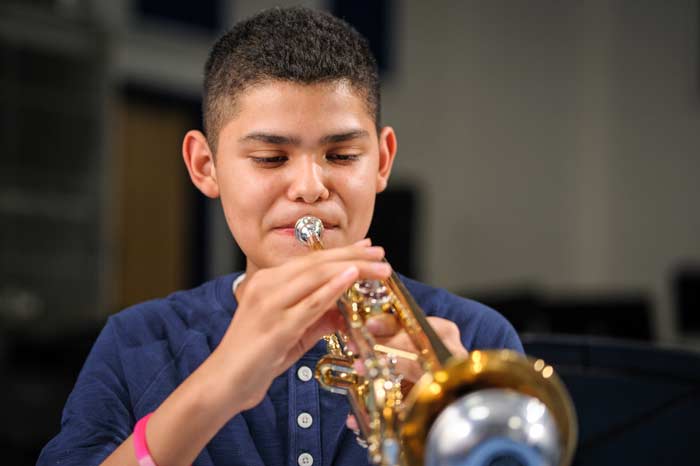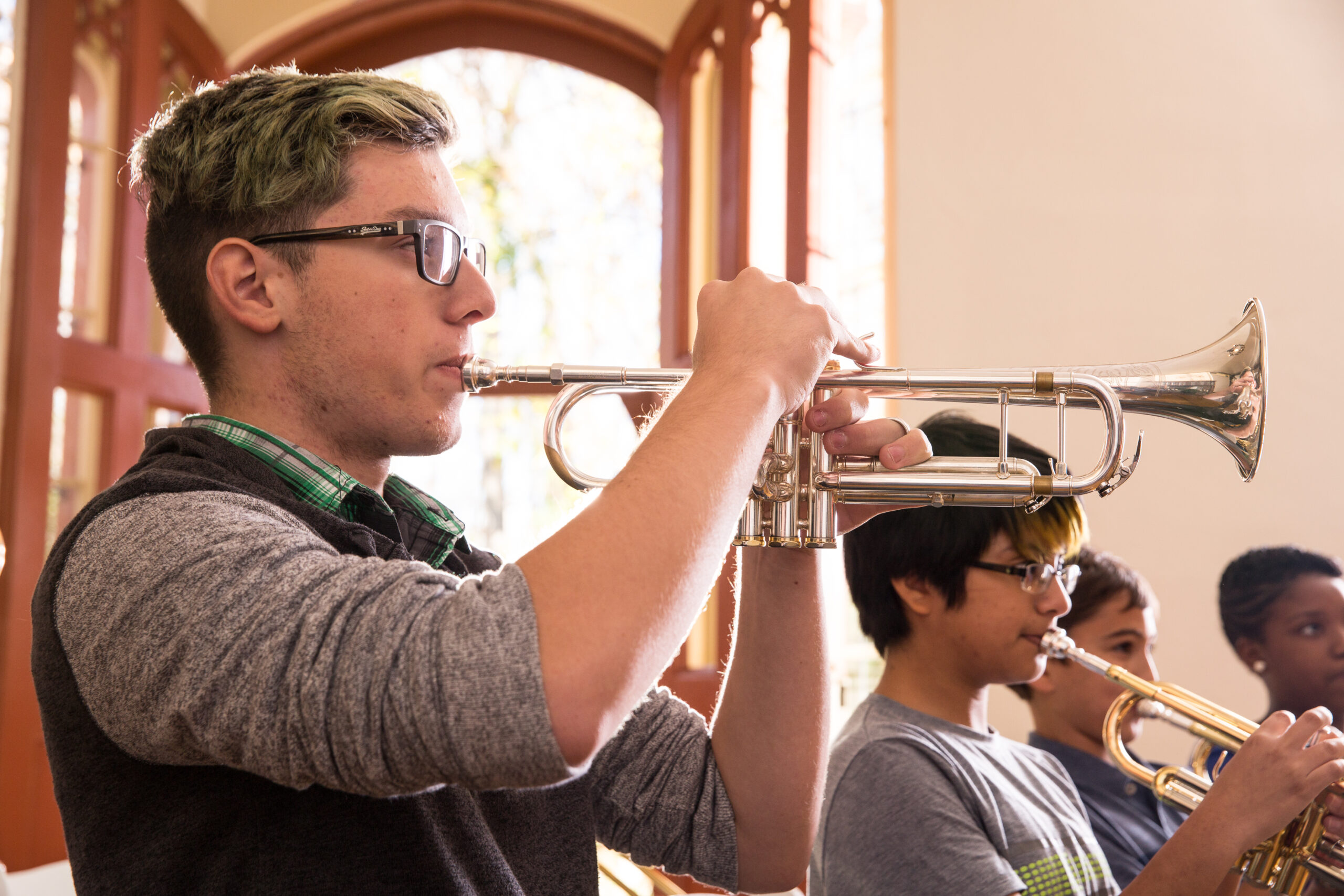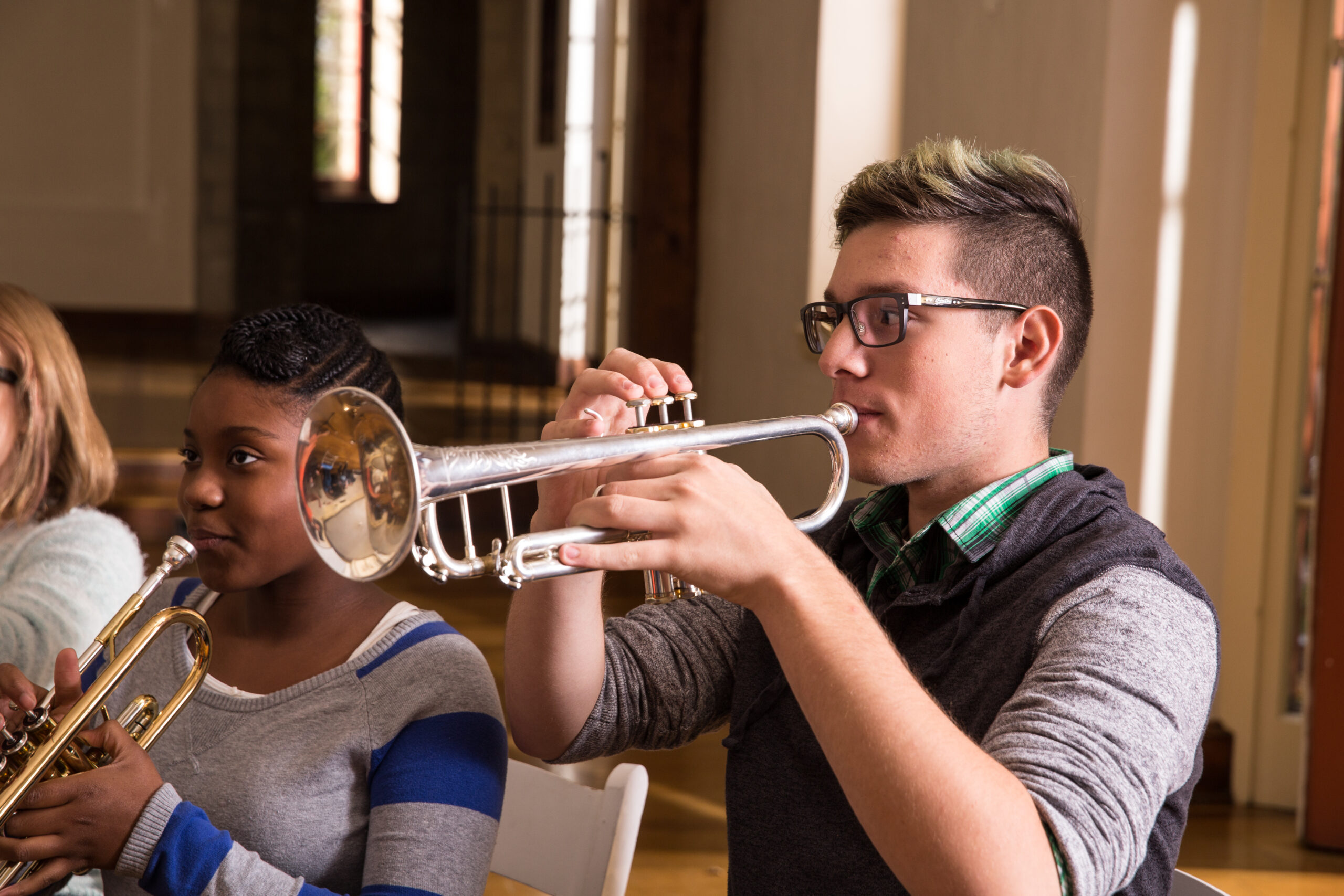July 28, 2015
Learn How To Read Trumpet Music with These Easy Tips


Learning how to read trumpet music is easy. Start by learning the musical alphabet, then understand concepts including the staff, treble clef, notes, and time signature. Although music lessons are a great way to learn to read music, this guide will help you with the fundamentals of trumpet music.
The trumpet is a perfect instrument for beginners. A member of the brass family, the trumpet has the most versatile range among brass instruments. This makes it a popular choice for playing music in a variety of genres, from marching band and choral music to jazz and swing. As with any instrument, to play the trumpet you’ll need to learn to read sheet music. Here are the basics you need to understand when reading music for trumpet:
- The Musical Alphabet
- The Staff
- Treble Clef
- Musical Notes
- Time Signatures
- Key Signatures
When learning how to read music for trumpet or any instrument, these fundamental concepts will allow you to understand music theory. Learn how to read trumpet music and soon you can play any song.
How To Read Trumpet Music: FAQs
What Is the Musical Alphabet?
Learning how to read music starts with learning the musical alphabet. In music, each tone produced by an instrument is called a musical note. These notes are assigned letters, which creates a common musical language that all composers and musicians can understand. The universal musical alphabet lets players know which notes to play in a song.
Unlike the alphabet we learn in school, the musical alphabet only has seven letters. It begins with A and goes up to G. This is called a major scale. The “half tones” between each note in the scale are known as sharps or flats. Sharps and flats are designated with the note symbols “#” and “b”, respectively.
What is the Music Staff?
Next, learn how to read trumpet music by understanding the musical staff. The staff is the name for the rows of lines printed on sheet music. There are five lines and four spaces on a musical staff. Note symbols are placed on one of the lines, or in between the lines, to indicate which note to play in the composition.
When you’re learning to play the trumpet, or any other musical instrument, you’ll need to learn how to read music on a staff. To do this, start at the bottom and work your way up. Each line or space ascends upwards through the musical alphabet, creating a scale.
The music staff also gives you information about the length of the song and parts of the melody that may repeat. You may also see musical symbols such as “rests,” which indicate periods of the song where you don’t play your trumpet.
What is Treble Clef?
A “clef” is a symbol that appears at the very beginning of the staff on a sheet of music. Clefs act like a kind of key or roadmap, indicating which note is which. There are two types of clefs, treble clef and bass clef. The trumpet is one of many instruments that plays in treble clef.
Treble clef is also known as “G clef” for two reasons. First, it looks a little like a fancy cursive letter G. It also tells you which line on the staff indicates a G note. The inner curve of the treble clef will always encircle a specific line on the staff. This means that any note on the treble clef line is a G note. The treble clef thus lets players know where every note falls.
If you’re having trouble, try using a helpful mnemonic. You can learn the ascending notes on the treble clef lines by remembering the phrase “Every Good Boy Does Fine” — starting from the bottom to the top, the notes are E, G, B, D, and F. For the notes on the spaces in between the lines, use “Face” for F, A, C, and E. Practicing scales will also help you learn treble clef.
What are Musical Notes?
As previously discussed, a musical note represents a specific sound produced by the instrument. These notes are then named A through G based on the universal musical alphabet. When written on sheet music for trumpet or any other instrument, musical notes are depicted as specific symbols that appear on the musical staff ledger lines.
There are several different types of musical notes. When you’re learning how to play the trumpet, your first lessons will likely include the eighth note, quarter note, half note, and whole note. Each of these note symbols look slightly different. They indicate how long you should hold the note, which creates the rhythm and melody of the song.
What are Time Signatures?
At the beginning of every piece of music for trumpet or other instruments, you’ll notice two numbers on the staff next to the clef. This is called the time signature. Time signatures have two numbers. To explain this concept, we’ll use 4/4 time, which is a very common time signature for trumpet music.
In 4/4 time, there are four quarter notes, two half notes, or one whole note in each measure. This is because the bottom number in the time signature indicates how long to hold each note, while the top number tells you how many beats there are in each staff measure.
What is Key Signature?
Finally, learning how to read trumpet music means learning key signature. The key signature is similar to the time signature because both appear at the beginning of the staff, right next to the clef.
While the time signature provides information about the song’s tempo, the key signature indicates how many sharps and flats are meant to be played. A sharp or flat placed on a specific line or space of the staff means to play these notes in the piece.
Learn More Trumpet Music with Lessons from Music and Arts
Understanding these basic concepts will help you learn how to read trumpet music. To take your playing further, try private trumpet lessons from Music and Arts. With locations nationwide, Music and Arts offers music lessons to adults and children of all ages and all playing levels.
Whether you’re interested in trumpet lessons for beginners or you’re a more advanced player looking to sharpen your skills, our trained teachers will help you become a stronger player. Contact us today for more information about private trumpet lessons. You can even rent one from us, too.







